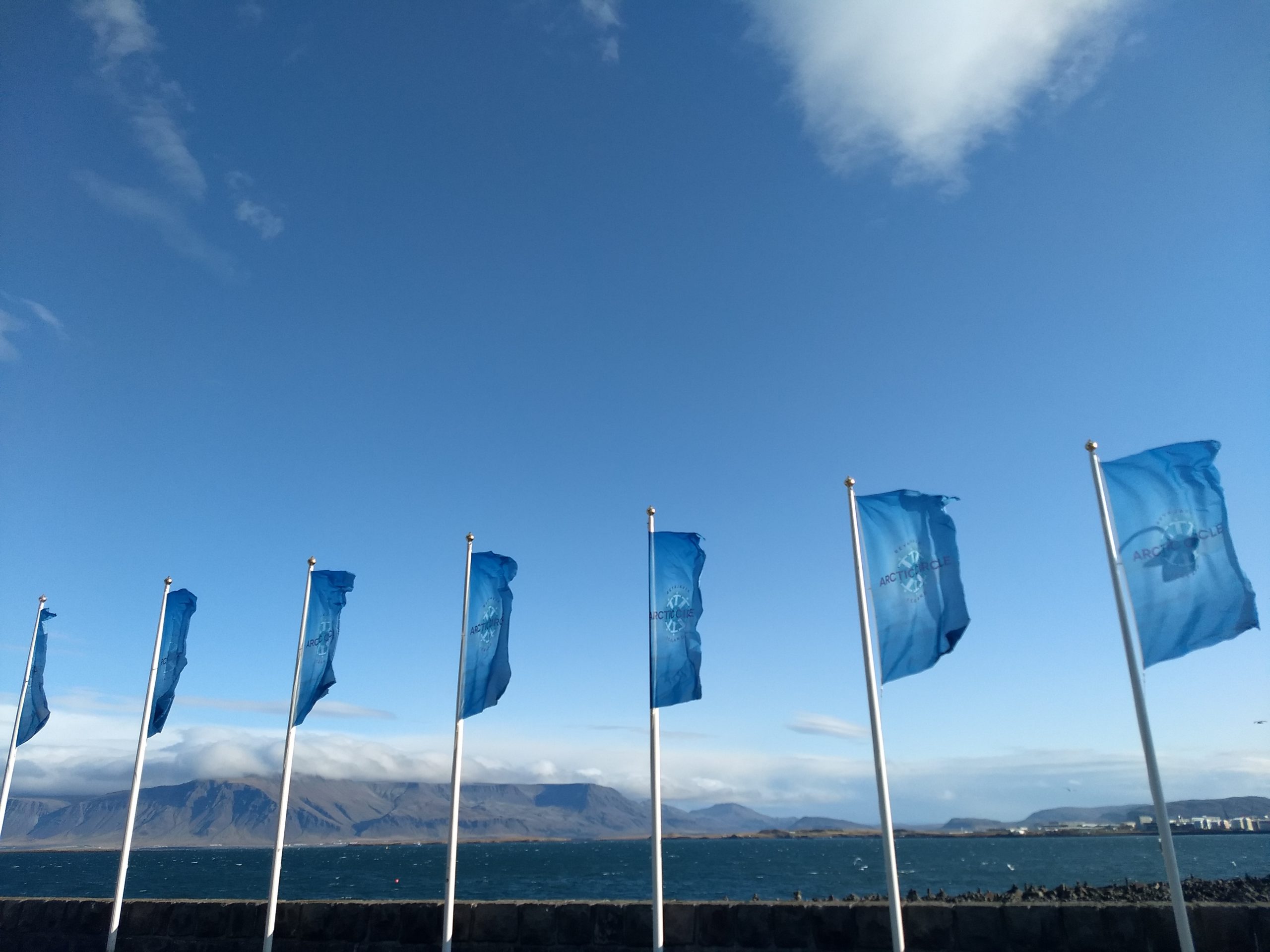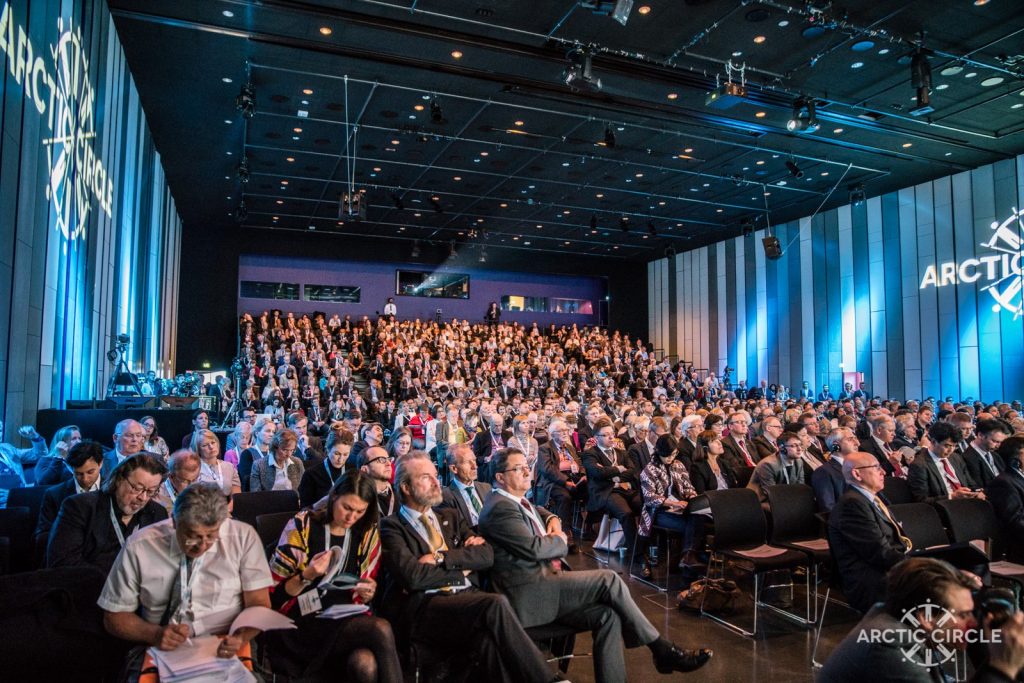How coronavirus cancellations could change the way Arctic dialogue is conducted
Losing events such as the annual Arctic Circle Assembly will hinder important opportunities for informal interaction. But online events do have some upsides.

The Arctic Circle Assembly, the largest international gathering on the Arctic held in Reykjavik every fall, has been canceled due to the coronavirus pandemic.
The news comes as Iceland sees an uptick in cases, Europe girds for a second wave, and cases in the United States continue to rise dramatically.
Arctic Circle draws attendees from more than 60 countries, Ásdís Ólafsdóttir, director of the assembly, told ArcticToday. As cases began to rise in Iceland and the government reinstated limits on public gatherings, and as the virus spread elsewhere in the world, “it became clear that the Assembly could not take place,” she said.
The conference wasn’t the first Arctic event to cancel due to coronavirus concerns, but it’s likely the largest.
It’s not yet clear what effects this cancellation and others might have on the Arctic community, but Beate Steinveg has some ideas.
Steinveg is a doctoral student specializing in Arctic governance at the University of Tromsø who has conducted research on Arctic conferences, including surveying meeting attendees to see what they get out of conferences such as Arctic Circle and Arctic Frontiers, the other major international conference, which takes place in Tromsø, usually in late January.
Steinveg’s research, which was published late last month in the journal Polar Geography, finds that Arctic conferences serve as informal but important meeting places where geopolitical changes in the region are examined and debated — supplementing the more formal work of bodies such as the Arctic Council.
“Much of the conference’s identity goes into the mingling and networking taking place around the breakout sessions and in the evening events,” she told ArcticToday.
Conferences are more than channels of information, Steinveg says.
“Most attendees go to a conference with a purpose — some sort of self-interest they want to fulfill — which is lost when following an event virtually.” Those interests may include promoting a new policy or research project, or finding coauthors, partners and customers.
While several other conferences and events have gone virtual this year, the value of a conference like Arctic Circle, Steinveg said, is getting people from around the world in the same room. But with the coronavirus pandemic, that’s simply not possible.

Line Kjelstrup, the administrative director at Arctic Frontiers, says that conference also expects disruptions because of the pandemic.
“Arctic Frontiers has had more time to consider our options and we see that it will be difficult to conduct our conference as originally planned,” she told ArcticToday.
Arctic Frontiers recently surveyed attendees, many of whom said a virtual meeting would work for their needs.
“However, one should not underestimate the importance of networking, particularly for those who are early career experts and scholars,” Kjelstrup said.
So far, Arctic Frontiers is still planning an in-person conference in Tromsø in February 2021 for a limited number of participants, accompanied by virtual sessions for others.
While the important mingling and networking that Kjelstrup and Steinveg describe is hindered by online conferences, there may be some situations in which virtual events make sense — or can even be better than in-person sessions.
Jack Durkee, the program associate at the Wilson Center’s Polar Institute, told ArcticToday that moving the institute’s events to an all-virtual format “allows us to access speakers and audiences at a much wider range than we previously had before.”
Speakers and moderators don’t have to travel to Washington, D.C., which can be expensive, time-consuming and environmentally harmful. And viewers can tune in from anywhere, at any time, in the world, making the sessions more accessible.
Durkee said the Wilson Center saw a tenfold increase of webcast viewers for its events from March to May, compared to the same time last year.
“Moving forward, we’re going to see more Zoom meetings and more webinars,” Durkee said. Speakers are more comfortable participating remotely, rather than prioritizing in-person meetings, as virtual events become de rigeur.
In the future, Durkee said, the Polar Institute will likely do more of a mix of in-person and virtual events. For example, he said, a Greenland Dialogues event might best be conducted remotely, while a military security event might make more sense in downtown D.C.
There are, of course, challenges to switching to virtual. Not everyone has the connectivity necessary to view or present in high-bandwidth video — especially in the Arctic, where connectivity remains a challenge.
It’s also more difficult to host free-flowing conversations and interactions on the sidelines — the networking that conferences and events are known for — in a virtual setting.
Even opening up the chat feature in virtual conferences can facilitate “Zoom bombing” and inappropriate or offensive comments. Instead, Durkee recommends having viewers email questions to the organizers during the event.
In fact, organizers may move to this model with in-person events in the future, in order to open up more time for questions at events and to allow the moderator to group together questions and determine the flow of conversation.
This would also cut back on inappropriate or wide-ranging interactions — including those of the infamous “this is more of a comment than a question” variety.
When organizing online events, it’s also important to consider “digital fatigue,” Steinveg said. “Engaging people and having them participate in ‘breakout groups’ in Zoom or other similar functions is probably a good idea.”
For Arctic Circle, Ólafsdóttir said, organizers concluded that moving all sessions online for only three days — and continuing to hold many of them simultaneously — would be unfair to presenters and attendees in different time zones.
Instead, Arctic Circle is planning a new virtual “platform” to help their global Arctic audience to interact with political, scientific, business and other leaders.
The platform is not intended to replace the in-person assembly, Ólafsdóttir said. “However, a hybrid conference is something that is, in my opinion, the future of events and is something that the Arctic Circle will consider for its future assemblies and forums.”
The next in-person assembly is slated for October 2021. In the meantime, Arctic Circle Forums — smaller events held in different locations around the globe — are still planned to take place as in-person events in Germany, Japan, Greenland, and the United Arab Emirates.
“However, as the situation is still quite uncertain, the Arctic Circle will closely monitor any developments that could influence an in-person event,” Ólafsdóttir said.